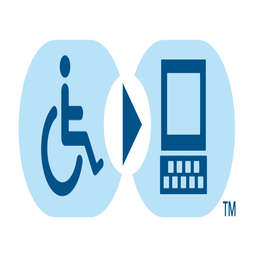Essential 5 Accessibility Apps: Revolutionizing Inclusivity
Related Articles: Essential 5 Accessibility Apps: Revolutionizing Inclusivity
- Ultimate Showdown: 5 Top Music Streaming Apps Compared
- Amazing 5 Budgeting Apps To Master Your Finances
- Amazing 5 Fitness Apps To Transform Your Workout Routine
- Essential 7 Video Editing Tools Every Filmmaker Must Master
- Essential Antivirus: 5 Crucial Factors For Choosing The Best Protection
Introduction
In this auspicious occasion, we are delighted to delve into the intriguing topic related to Essential 5 Accessibility Apps: Revolutionizing Inclusivity. Let’s weave interesting information and offer fresh perspectives to the readers.
Table of Content
Essential 5 Accessibility Apps: Revolutionizing Inclusivity

Accessibility is no longer a niche concern; it’s a fundamental right and a crucial aspect of building a truly inclusive society. Technology plays a pivotal role in achieving this, and the proliferation of accessible apps is a testament to that progress. However, the sheer number of available apps can be overwhelming. This article will highlight five essential accessibility apps that significantly improve the lives of individuals with diverse needs, empowering them to participate more fully in the digital world and beyond. We will explore their functionalities, benefits, and limitations, providing a comprehensive guide to choosing the right tools for enhanced inclusivity.
1. Seeing AI: A Powerful Tool for Visual Impairment
Seeing AI, developed by Microsoft, is a groundbreaking app designed specifically for individuals with visual impairments. Unlike simple screen readers that primarily focus on text, Seeing AI utilizes advanced artificial intelligence to interpret the visual world around the user. This transformative technology provides detailed descriptions of images, identifies people and objects, reads printed text, and even recognizes currency and handwriting. The app’s capabilities extend beyond simple object recognition; it can analyze scenes, offering contextual information such as the overall mood or atmosphere of a photograph. For instance, it might describe a picture as "a busy street scene with lots of people and traffic," providing much richer information than a simple list of identified objects.
The impact of Seeing AI on the daily lives of visually impaired individuals is profound. It empowers them to navigate unfamiliar environments with greater confidence, interact more easily with printed materials, and participate more fully in social situations. Imagine the freedom of being able to independently identify a friend in a crowded room, read a restaurant menu, or understand the details of a product label – these are just some of the everyday tasks made significantly easier by Seeing AI.
However, like any technology, Seeing AI has its limitations. The accuracy of its descriptions can vary depending on the complexity of the scene or the quality of the image. In challenging lighting conditions or with highly cluttered environments, the app may struggle to provide accurate information. Furthermore, the app requires a stable internet connection for optimal performance, which can be a barrier for users in areas with limited connectivity. Despite these limitations, Seeing AI remains a powerful tool that significantly enhances the independence and participation of visually impaired individuals. Its ongoing development and improvements promise even greater accuracy and functionality in the future.
2. Be My Eyes: Connecting Sight and Support Through Human Interaction
Be My Eyes takes a different approach to addressing visual impairment by connecting visually impaired users with sighted volunteers through a live video call. When a user needs assistance with a task, they can initiate a call, and a volunteer can see the user’s surroundings through their device’s camera. The volunteer can then provide real-time guidance and assistance, whether it’s reading a label, identifying an object, or navigating a challenging situation.
The beauty of Be My Eyes lies in its human element. While AI-powered apps like Seeing AI offer impressive technological capabilities, the human connection provided by Be My Eyes offers a unique level of support and understanding. The volunteers are not just providing information; they are offering a helping hand, a friendly voice, and a sense of connection. This personalized approach can be particularly valuable in situations requiring nuanced interpretation or emotional support.
However, Be My Eyes relies on the availability of volunteers, which can be unpredictable. Response times can vary, and there may be instances where a volunteer is not immediately available. Additionally, the app requires a stable internet connection for both the user and the volunteer, potentially limiting its accessibility in areas with unreliable connectivity. Despite these limitations, Be My Eyes provides a valuable service that complements AI-powered solutions, offering a human touch that is often essential in addressing the challenges faced by visually impaired individuals.
3. Voice Dream Reader: Transforming Text into an Auditory Experience
Voice Dream Reader is a powerful text-to-speech app that elevates the reading experience for individuals with visual impairments or dyslexia. It offers a wide range of customization options, allowing users to adjust the speed, pitch, and tone of the synthesized voice to suit their preferences. The app supports a variety of file formats, including EPUB, PDF, and TXT, making it compatible with a wide range of reading materials. Furthermore, it offers features such as adjustable font sizes, dyslexia-friendly fonts, and highlighting capabilities, enhancing readability and comprehension.
The ability to customize the reading experience is a key advantage of Voice Dream Reader. Users can fine-tune the settings to optimize their comprehension and minimize fatigue. The app’s ability to handle different file formats also makes it highly versatile, enabling users to access a wide range of reading materials. The inclusion of dyslexia-friendly features further expands its accessibility, making it a valuable tool for individuals with a wide range of reading challenges.
However, the app’s extensive features can also make it somewhat complex to navigate for new users. The learning curve might be steeper than some simpler text-to-speech apps. Furthermore, the quality of the synthesized speech can vary depending on the chosen voice and the complexity of the text. Despite these limitations, Voice Dream Reader remains a highly versatile and powerful tool that significantly enhances the reading experience for individuals with visual impairments or dyslexia.
4. Google Translate: Bridging Language Barriers for Enhanced Communication

While not strictly an accessibility app, Google Translate plays a crucial role in fostering inclusivity by breaking down language barriers. For individuals with hearing impairments or speech impediments, the ability to translate spoken or written language in real-time can significantly enhance communication. The app’s real-time translation feature, using the device’s camera to translate text in images, is particularly useful in situations where written communication is necessary, such as reading menus, signs, or documents.
The app’s versatility extends beyond translating text; it can also translate spoken language, making it invaluable for individuals with communication challenges. The ability to easily communicate across language barriers can significantly improve access to information, services, and social interactions. This is especially crucial in diverse communities where multiple languages are spoken.
However, the accuracy of Google Translate’s translations can vary, particularly with complex or nuanced language. The app may struggle with slang, idioms, or dialects. Furthermore, the app requires a stable internet connection for optimal performance, which can be a limitation in areas with unreliable connectivity. Despite these limitations, Google Translate remains a powerful tool that significantly improves communication and access to information for individuals with diverse linguistic needs.
5. TapTapSee: Instant Object Recognition for Visual Independence
TapTapSee is a user-friendly app designed to provide instant object recognition for visually impaired users. With a simple tap of a button, the app captures an image and provides an audio description of the object in the image. Its simplicity and speed make it an ideal tool for quick identification of everyday objects, eliminating the need for cumbersome navigation through menus or settings.
The app’s ease of use is a significant advantage. Its straightforward interface makes it accessible to users with varying levels of technological proficiency. The speed of its object recognition is also impressive, providing almost instantaneous feedback, which is crucial in many everyday situations.
However, like other image recognition apps, TapTapSee’s accuracy can vary depending on the complexity of the object or the quality of the image. It may struggle with objects that are poorly lit, partially obscured, or unusual in appearance. Despite these limitations, TapTapSee remains a valuable tool that enhances the independence and efficiency of visually impaired individuals in their daily lives.
Conclusion:
These five apps represent just a small fraction of the many accessibility tools available. Their diverse functionalities demonstrate the transformative power of technology in fostering inclusivity. While each app has its limitations, their overall impact on the lives of individuals with diverse needs is undeniable. By embracing and promoting the use of these and other accessibility apps, we can move closer to creating a truly inclusive digital world where everyone can participate fully and equally. The future of accessibility is bright, driven by continued innovation and a growing commitment to creating technology that empowers everyone. The ongoing development and refinement of these apps, along with the emergence of new and improved tools, promise even greater accessibility and inclusivity in the years to come. It is imperative that we continue to advocate for accessible technology and support the development of innovative solutions that break down barriers and empower individuals with disabilities to live full and meaningful lives.

Closure
Thus, we hope this article has provided valuable insights into Essential 5 Accessibility Apps: Revolutionizing Inclusivity. We thank you for taking the time to read this article. See you in our next article!
google.com








